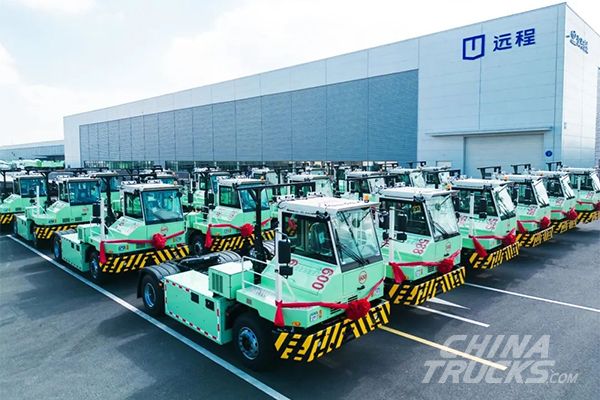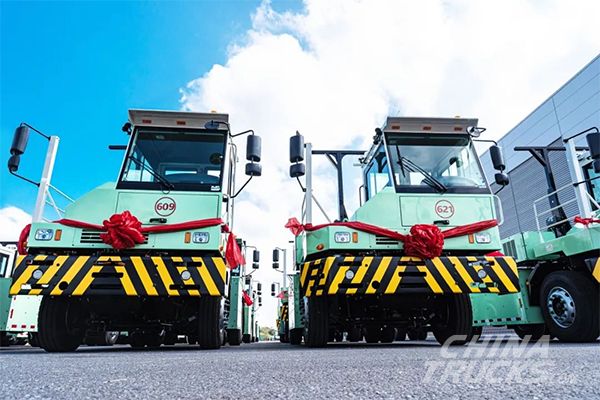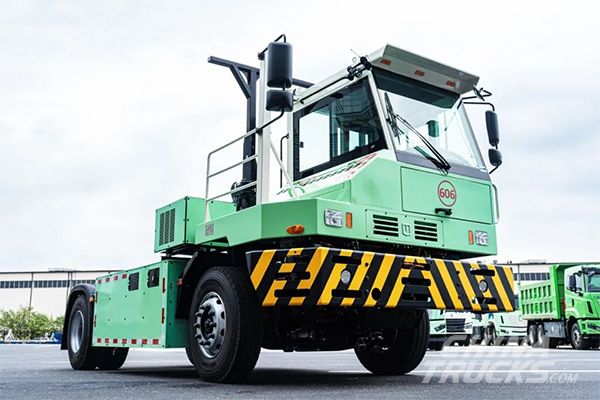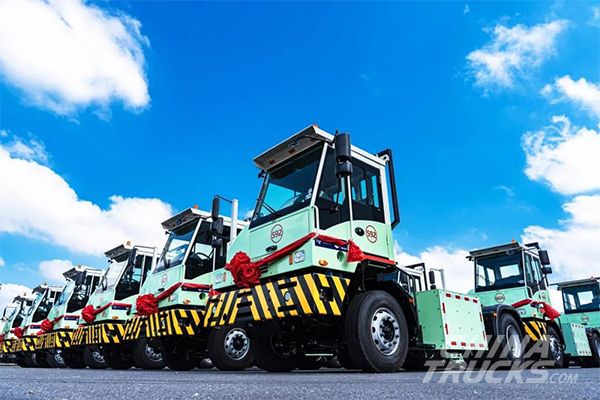
Energy Efficient at 0.9 kWh/km, Saving $17,000 Annually
These electric terminal tractors are specially designed for the demands of container transport at ports, where routes are short (typically 1-3 km) and vehicles operate almost continuously. The model has already captured over 50% market share in regions like Shanghai and Ningbo ports, thanks to its efficiency, durability, and strong customer satisfaction.

In actual port use, these vehicles consume just 0.9 kWh per kilometer, helping clients save approximately $17,000 per year compared to traditional diesel models. One customer noted, "The electric terminal tractors deliver powerful performance, especially on inclines and with heavy loads. Their reliability makes handling high-volume container transport much easier for us."
Built for Efficiency, Safety, and Comfort
The newly delivered terminal tractors are equipped with a 9.5-ton steering axle, 38,000 Nm of braking torque, and a large steering angle, ensuring strong support and durability during demanding, high-frequency operations. The dual-reduction cast-steel drive axle is both sturdy and lightweight, providing efficient and reliable performance while reducing noise and lowering maintenance costs.

These tractors also prioritize safety and comfort. The offset cabin design expands the driver’s field of vision, reducing blind spots and simplifying container loading and unloading. The steel cabin structure offers impact protection, and its excellent sealing and shock-absorbing features further enhance safety. To ensure a comfortable ride, the tractors come with a front and rear air suspension system to minimize bumps, and the driver’s seat is equipped with an air-cushioned design to reduce fatigue during long hours of operation.

A Green, Efficient Future
This delivery of CAMC's electric terminal tractors is not just a milestone for the company, but a step forward for the entire port industry towards a more sustainable future. With growing environmental concerns and the need for greener solutions, CAMC’s innovative approach provides a blueprint for the industry to follow. As these eco-friendly vehicles become more widely adopted, they will undoubtedly play a crucial role in reshaping port operations, driving both environmental responsibility and economic success.